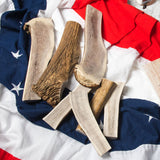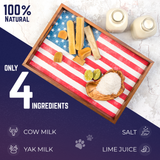Why the Right Dog Breed and Winter Care Matter
When temperatures drop and snow blankets the ground, some dogs come alive while others shiver and retreat indoors. Winter dogs are breeds naturally equipped for cold climates through generations of selective breeding, featuring dense double coats, weather-resistant fur, and behavioral traits that help them thrive in harsh conditions.
Key Takeaways
- Winter dogs are breeds naturally adapted to cold climates through selective breeding.
- These dogs have dense double coats and weather-resistant fur to protect them from harsh weather.
- Behavioral traits in winter dogs help them thrive in snowy and cold conditions.
- Choosing the right dog breed is important for success in cold weather environments.
- Proper winter care is essential to keep dogs comfortable and healthy during low temperatures.
Table of Contents
Quick Answer
Winter dogs are breeds like Siberian Huskies, Alaskan Malamutes, Saint Bernards, and Great Pyrenees that possess thick double coats, natural insulation, and cold-weather adaptations. These breeds can safely handle temperatures that would endanger single-coated dogs, but all dogs-regardless of breed-need proper winter care including paw protection, appropriate gear, and monitoring for hypothermia and frostbite.
The stakes couldn't be higher. Every winter, emergency veterinary clinics see spikes in cold-related injuries: frostbitten paws, hypothermia cases, and chemical burns from road salt. Choosing the wrong breed for your climate or failing to understand seasonal risks puts your dog's health-and potentially their life-on the line.
Critical insight: Even traditional winter breeds can suffer cold injuries if proper precautions aren't taken. A Saint Bernard in the snow might look invincible, but exposed paw pads and prolonged exposure still pose real dangers.
This comprehensive guide arms you with everything needed for cold-weather success: breed selection based on your climate and lifestyle, essential winter gear that actually works, and proven techniques to keep any dog safe when temperatures plummet. Whether you're considering a snow rescue dog breed or helping your current companion navigate their first winter, the right knowledge prevents problems before they start.
We'll cover the science behind what makes certain breeds winter-ready, identify the specific risks every dog owner must understand, and provide actionable steps for grooming, gear selection, and emergency preparedness. From Arctic sled dogs to mountain guardians, you'll learn which breeds truly excel in cold conditions and how to support them through proper care.
Remember: extreme ownership applies to seasonal care. Your dog's winter safety depends entirely on your preparation, vigilance, and willingness to invest in proper protection. No breed is immune to cold-weather dangers when basic precautions are ignored.
Core Concepts in Cold-Weather Dog Care

What Makes a Dog "Winter-Ready"?
True winter dogs possess specific anatomical and behavioral adaptations developed over centuries of breeding in harsh climates. Understanding these traits helps you evaluate whether your current dog-or a potential addition-can handle serious cold exposure.
Essential Winter Dog Traits:
- Double coats: Dense undercoat provides insulation while guard hairs repel moisture
- Furry paws: Hair between toes acts as natural snowshoes and insulation
- Compact ears: Reduced surface area minimizes heat loss and frostbite risk
- Behavioral adaptations: Tail-over-nose sleeping, snow eating for hydration
- Efficient metabolism: Ability to maintain body temperature in subzero conditions
The most crucial factor is coat structure. Dogs with thick double coats-like those found in snow dogs breeds-trap warm air close to the skin while the outer guard hairs shed moisture and block wind. This natural insulation system explains why a Siberian Husky can sleep comfortably in snow while a Greyhound would face hypothermia in the same conditions.
However, coat alone doesn't guarantee winter success. Body size, fat distribution, and conditioning all play roles. Large breeds generally retain heat better than small ones, but a well-conditioned medium-sized dog breed snow specialist often outperforms an out-of-shape giant breed in cold endurance.
Understanding the Risks: Cold Weather Dangers
Even the most winter-hardy breeds face real dangers when temperatures drop. Recognizing these risks and their warning signs could save your dog's life during extreme weather events.
Preventable Risks
- Paw pad injuries from ice and salt
- Dehydration from eating snow
- Overexertion in deep snow
- Getting lost in whiteout conditions
Serious Medical Emergencies
- Frostbite on ears, tail, and paws
- Hypothermia from prolonged exposure
- Chemical burns from road salt
- Respiratory distress in extreme cold
Frostbite typically affects extremities first-ears, tail tip, and paw pads show pale or grayish skin that feels cold and hard. As circulation returns, these areas become red and painful. Hypothermia progresses through stages: initial shivering gives way to lethargy, then stumbling, and finally collapse.
Chemical exposure presents a growing threat as cities increase rock salt and de-icer use. These substances cause burning sensations, leading to excessive paw licking and potential poisoning if ingested. Even dogs that look like Saint Bernards-bred for Alpine rescue work-can suffer chemical burns on their pads during urban winter walks.
Age and health factors: Puppies, senior dogs, and those with chronic conditions face higher risks regardless of breed. A young Saint Bernard in snow might seem invincible, but their developing thermoregulation system requires extra protection.
Dogs' Temperature Tolerance and Cold Stress
Understanding your dog's temperature limits prevents dangerous exposure situations. Most dogs begin showing cold stress around 45°F, but winter breeds often remain comfortable until temperatures drop below 20°F.
Early warning signs include reluctance to continue walking, lifting paws frequently, seeking warm surfaces, and excessive shivering. These behaviors indicate your dog has reached their comfort limit-pushing further risks serious injury.
Double-coated breeds like rescue snow dogs maintain core temperature more effectively, but they're not immune to extremes. Wind chill, wet conditions, and prolonged exposure affect all dogs. Even an experienced snow rescue dog needs monitoring during extended outdoor work.
The key difference between winter-ready and cold-sensitive dogs lies in their ability to maintain core body temperature. Winter breeds can typically handle 30-40 degrees colder than single-coated dogs before showing stress signs, but all dogs need protection below 0°F.
Conditioning plays a crucial role in cold tolerance. Dogs gradually exposed to dropping temperatures develop better circulation and thicker coats. Our dog Dexter showed remarkable adaptation over several winters, building stamina and cold resistance through consistent outdoor activity and proper nutrition.
The Best Dog Breeds for Winter
Not all dogs are created equal when it comes to cold weather survival. The most effective winter dogs share common ancestry with Arctic working breeds, mountain guardians, and Nordic hunting companions. These breeds didn't just adapt to cold-they were selectively bred to thrive in it.
Top Winter Dog Categories:
- Arctic Sled Dogs: Ultimate cold endurance and work drive
- Mountain Guardians: Large, calm protectors with thick coats
- Nordic Hunters: Agile, weatherproof, high-energy breeds
- Compact Snow Specialists: Smaller breeds with exceptional cold tolerance
Arctic Sled Dogs
These breeds represent the gold standard for cold-weather performance. Developed in some of Earth's harshest climates, they possess unmatched endurance and natural cold protection.
Alaskan Malamute stands as the oldest and largest Arctic sled dog, originally bred by the Mahlemut Inuit tribe for hauling heavy freight across frozen tundra. Their thick, coarse double coat and powerful build allow them to work comfortably in temperatures reaching -70°F. Unlike faster sled dogs, Malamutes were designed for strength and endurance over speed.
Siberian Husky remains the most recognizable of the snow dogs breeds, famous for their piercing blue eyes and incredible stamina. Their dense double coat sheds water and traps warm air, while their compact feet with hair between the toes provide natural snowshoes. These dogs can run over 100 miles per day in subzero conditions-a testament to their remarkable cold-weather engineering.
Energy requirements: Arctic breeds need substantial daily exercise regardless of weather. A bored Husky or Malamute becomes destructive quickly, making them better suited for active owners who embrace winter activities.
Mountain & Guardian Breeds
Mountain breeds combine cold tolerance with calm, protective temperaments. These gentle giants were developed to guard livestock in harsh alpine conditions, resulting in dogs that remain steady and reliable in challenging weather.
Saint Bernard represents the ultimate rescue dog, originally bred by monks in the Swiss Alps to locate travelers lost in mountain passes. Saint Bernards in the snow showcase their natural element-their massive size, thick coat, and incredible scenting ability made them legendary avalanche rescue dogs. Modern Saint Bernards retain these cold-weather advantages while serving as devoted family companions.
Great Pyrenees developed as livestock guardians in the Pyrenees Mountains, working independently through harsh winters. Their thick, weather-resistant coat and natural protective instincts make them excellent winter dog breeds for families with property to patrol. These dogs remain calm and confident in snow and ice that would stress other breeds.
Bernese Mountain Dog combines the cold tolerance of Swiss mountain breeds with exceptional family temperament. Their striking tri-colored coat provides excellent insulation, while their gentle nature makes them ideal for families seeking a large, winter-capable companion.
Mountain Breed Advantages
- Excellent with children and families
- Natural protective instincts
- Calm, steady temperament
- Impressive cold tolerance
Mountain Breed Challenges
- Shorter lifespan (6-10 years typical)
- Heavy shedding year-round
- Prone to joint issues
- Require significant space
Nordic and European Breeds
These breeds represent centuries of development in Northern European climates, combining hunting ability with remarkable cold resistance. They offer excellent options for active families seeking medium-sized winter dogs.
Norwegian Elkhound carries Viking heritage, originally used for hunting elk and bear in Norway's harsh climate. Their thick, waterproof double coat and compact build make them exceptional cold-weather companions. These dogs show remarkable agility in snow and maintain high energy levels even in bitter cold.
Finnish Lapphund worked alongside the Sami people herding reindeer across Arctic tundra. Their weatherproof double coat and friendly temperament create an ideal family dog that genuinely enjoys winter activities. These dogs adapt well to both rural and suburban settings while maintaining their cold-weather excellence.
Keeshond developed on Dutch barges and farms, creating a medium-sized breed with exceptional cold tolerance and social skills. Their thick, plush coat and compact size make them excellent apartment-friendly winter breed dogs that still crave outdoor adventures.
Training advantage: Nordic breeds typically show high intelligence and eagerness to work, making them excellent candidates for winter sports like skijoring, sledding, and snow hiking.
Compact & Specialized Snow Breeds
Size doesn't always determine cold tolerance. Several smaller breeds possess remarkable winter capabilities, often exceeding larger dogs in specific cold-weather situations.
Tibetan Terrier developed in Himalayan monasteries, where they served as companions and good-luck charms. Their large, flat feet act as natural snowshoes, while their thick double coat provides insulation in extreme altitude conditions. Despite their size, these dogs navigate snow better than many larger breeds.
American Eskimo Dog combines Spitz-type cold tolerance with manageable size and excellent family temperament. Available in toy, miniature, and standard sizes, they offer winter dog breed options for various living situations while maintaining impressive cold resistance.
Samoyed showcases perhaps the most beautiful winter coat among all breeds-their pristine white, weather-resistant fur was developed for Arctic herding work. These dogs maintain their famous "Sammy smile" even in brutal cold, reflecting their genuine enjoyment of winter conditions.
The best winter dog for your family depends on your activity level, living space, and experience with high-maintenance coats. Active families with yards should consider Arctic or mountain breeds, while apartment dwellers might prefer compact specialists like American Eskimo Dogs or Keeshonds.
Dogs that look like Saint Bernards-such as Leonbergers, Newfoundlands, and Pyrenean Mastiffs-often share similar cold tolerance due to their mountain heritage and thick coats. These breeds provide alternatives for families attracted to the Saint Bernard appearance but seeking different temperament or size characteristics.
Essential Cold-Weather Dog Care Techniques

Even the most winter-hardy breeds require proper care to stay safe and comfortable during cold months. Mastering these fundamental techniques prevents injuries and ensures your dog enjoys winter activities rather than merely surviving them.
Grooming for Winter Performance
Winter grooming differs dramatically from summer maintenance. The goal shifts from cooling and reducing bulk to maximizing insulation and protection. Understanding these differences keeps your dog in snow comfortable and safe.
Regular brushing becomes critical for double-coated breeds during winter months. Dead undercoat creates matting that reduces insulation effectiveness, while proper brushing distributes natural oils that provide water resistance. Brush thoroughly 2-3 times weekly, working from skin level outward to maintain the coat's insulating properties.
Critical mistake: Never shave or significantly trim a double-coated dog's fur before winter. Their natural coat system requires both undercoat and guard hairs to function properly-removing either layer compromises their cold protection.
Bathing frequency should decrease during winter months. Over-bathing strips essential oils that provide natural weather resistance. When bathing becomes necessary, use moisturizing shampoos designed for cold-weather dogs and ensure complete drying before outdoor exposure.
Paw Safety and Protection
Paw injuries represent the most common winter dog problems, affecting even hardy snow rescue dogs during extended outdoor work. Proper paw care prevents painful injuries and keeps your dog mobile throughout winter.
Pre-walk preparation starts with paw balm application. Quality balms create a protective barrier against ice, salt, and chemical de-icers while moisturizing paw pads. Apply balm 10-15 minutes before walks, allowing absorption while preventing immediate licking.
Post-walk care requires thorough paw cleaning with warm water to remove salt, chemicals, and ice balls. Dry completely between toes where moisture can freeze and cause injury. Inspect pads for cuts, cracks, or chemical burns that require immediate attention.
Boot introduction: Start boot training indoors during warm weather. Many dogs initially resist boots, but gradual introduction with positive reinforcement creates acceptance. Properly fitted boots prevent most winter paw injuries.
White snow dog breeds like Samoyeds and American Eskimo Dogs often show paw injuries more clearly against their light coat, making regular inspection easier. However, all dogs need consistent paw monitoring regardless of coat color.
Appropriate Winter Clothing and Gear
Not all dogs need winter clothing, but understanding when and how to use protective gear keeps any dog comfortable in extreme conditions. Even traditional winter dogs breeds benefit from gear in specific situations.
Jackets serve different purposes than sweaters. Insulated jackets provide warmth for single-coated breeds or dogs with health conditions, while waterproof shells protect double-coated dogs from wet snow that compromises their natural insulation. Choose based on your dog's specific needs rather than breed stereotypes.
Proper fit ensures effectiveness and safety. Measure your dog's chest, neck, and back length accurately-poorly fitted gear restricts movement and can cause injuries. Quality winter gear allows full range of motion while providing protection where needed most.
Even big snow dogs like Saint Bernards may need gear protection during extreme weather events. Wind-resistant shells prevent their thick coats from becoming waterlogged, while reflective gear improves visibility during short winter days.
Sizing considerations vary by breed type. Rescue dog snow workers often wear custom-fitted gear designed for extended outdoor work, while family pets need comfortable options for shorter exposure periods. Invest in quality gear that matches your dog's activity level and exposure duration.
Our dog Dexter showed us that gear acceptance improves with gradual introduction and positive associations. Start with short indoor sessions, reward calm behavior, and gradually increase wearing time before attempting outdoor use.
Essential Winter Gear Checklist:
- Paw balm: Pre-walk protection against salt and ice
- Boots: Ultimate paw protection for harsh conditions
- Reflective gear: Visibility during short winter days
- Insulated jacket: Extra warmth for single-coated or senior dogs
- Waterproof shell: Protection from wet snow for all breeds
Winter Safety: Common Problems and Practical Solutions
Even experienced winter dogs face seasonal challenges that require immediate recognition and response. Understanding these common problems and their solutions prevents minor issues from becoming serious health emergencies.
Recognizing Cold Stress and Hypothermia
Cold stress progresses through predictable stages, making early recognition crucial for preventing serious injury. Snow rescue dogs undergo extensive training to recognize these signs in both themselves and their handlers-knowledge every dog owner should possess.
Early warning signs include excessive shivering, reluctance to continue walking, and seeking warm spots like heating vents or sunny patches. Dogs may also show behavioral changes such as whining, restlessness, or attempting to return indoors during walks.
Advanced hypothermia symptoms demand immediate veterinary attention: muscle stiffness, slow or shallow breathing, lethargy, and pale or blue gums. Core body temperature drops below 95°F, creating a life-threatening emergency requiring professional intervention.
Emergency response: Move the dog to a warm environment immediately, wrap in blankets, and apply gentle heat to the chest and abdomen. Avoid hot water or heating pads, which can cause burns on cold skin. Contact your veterinarian while providing warming care.
Frostbite Prevention and Treatment
Frostbite affects extremities first-ears, tail, and paw pads show the earliest damage. Dogs that rescue in snow face constant frostbite risk, making prevention protocols essential for any dog spending extended time outdoors.
Prevention focuses on limiting exposure time and protecting vulnerable areas. Even cold-adapted breeds like those dogs that look like Saint Bernards can develop frostbite during extreme weather events or extended outdoor activities.
Early frostbite appears as pale or grayish skin that feels cold and numb. As circulation returns, the area becomes red and painful. Severe frostbite creates hard, cold skin that may appear white or blue-a veterinary emergency requiring immediate professional care.
Treatment approach: Gradually rewarm affected areas with lukewarm water (not hot), dry gently, and wrap loosely in soft bandages. Never rub frostbitten areas, which can cause additional tissue damage. Seek veterinary care for anything beyond minor surface frostbite.
Managing Paw Injuries and Chemical Burns
Winter paw injuries range from minor irritation to severe chemical burns from de-icing products. Big snow dogs with their larger paws may seem more resistant, but their size also means greater chemical exposure during walks.
Salt and chemical de-icers cause the most common injuries. Symptoms include excessive licking, limping, red or swollen pads, and visible cracks or cuts. Some dogs develop contact dermatitis from repeated exposure to harsh chemicals.
Immediate treatment involves thorough paw washing with warm water and mild soap, followed by complete drying and inspection for embedded debris or deep cuts. Apply paw balm to minor irritation, but seek veterinary care for deep cuts, persistent swelling, or signs of infection.
Effective Paw Protection Methods
- Pre-walk paw balm application
- Post-walk thorough cleaning and drying
- Quality boots for harsh conditions
- Regular paw pad inspection
Common Protection Mistakes
- Ignoring minor irritation until it worsens
- Using human products on dog paws
- Poorly fitted boots causing pressure sores
- Insufficient post-walk cleaning
Keeping Winter Dogs Active Indoors
High-energy winter dogs breeds need mental and physical stimulation regardless of outdoor conditions. Extreme weather days require creative indoor solutions to prevent destructive behaviors and maintain fitness.
Mental stimulation activities include puzzle feeders, scent work games, and training sessions focused on new tricks or commands. Saint Bernard snow enthusiasts might seem calm, but even these gentle giants need intellectual challenges during extended indoor periods.
Physical exercise adapts to indoor spaces through structured play sessions, stair climbing (for healthy adult dogs), and interactive toys that encourage movement. Treadmill training provides excellent exercise for dogs comfortable with the equipment.
Exercise conversion: One hour of outdoor winter activity typically requires 1.5-2 hours of indoor alternatives to achieve similar mental and physical satisfaction. Plan accordingly during severe weather periods.
Our dog Dexter taught us that consistency matters more than intensity during indoor exercise periods. Regular short sessions throughout the day prevent energy buildup better than single long sessions.
Winter Gear Maintenance and Replacement
Quality winter gear requires regular maintenance to remain effective throughout the season. Rescue snow dogs depend on properly functioning equipment-gear failure can create dangerous situations for working dogs and their handlers.
Jacket and coat maintenance involves regular cleaning according to manufacturer instructions, checking for worn waterproof coatings, and inspecting zippers and fasteners for damage. Replace any gear showing significant wear before it fails during critical conditions.
Boot inspection focuses on sole wear, strap integrity, and proper fit as dogs' feet may change slightly during the season. Boots showing excessive wear or poor fit can cause injuries rather than preventing them.
Replace winter gear when it no longer provides adequate protection or comfort. Signs include visible wear, compromised waterproofing, poor fit, or your dog showing reluctance to wear previously accepted items.
Choosing Your Perfect Winter Companion

Selecting the right winter dogs breed requires honest assessment of your lifestyle, experience level, and commitment to specialized care. The most beautiful white snow dog becomes a burden without proper preparation for their unique needs.
Consider your activity level realistically. Arctic breeds like Huskies and Malamutes demand extensive daily exercise regardless of weather conditions. Mountain breeds such as Saint Bernards in the snow offer gentler temperaments but require significant space and shorter lifespans. Nordic breeds provide middle-ground options with manageable size and excellent cold tolerance.
Grooming commitment varies dramatically between breeds. Double-coated dogs require year-round maintenance that intensifies during seasonal coat changes. Single-coated breeds need additional winter protection but simpler grooming routines.
Final Decision Factors:
- Climate match: Choose breeds suited to your local winter conditions
- Activity compatibility: Match energy levels to your lifestyle
- Space requirements: Ensure adequate room for breed size and exercise needs
- Grooming commitment: Prepare for specialized coat care requirements
- Health considerations: Research breed-specific health issues and lifespan
Good dogs for cold weather exist across size ranges and temperament types. The key lies in matching breed characteristics to your specific situation rather than choosing based on appearance alone. Winter breed dogs thrive when their natural abilities align with owner expectations and capabilities.
Investment in proper gear, training, and veterinary care ensures any winter dog reaches their full potential. Quality equipment prevents injuries and enhances comfort, while consistent training creates reliable responses in challenging conditions.
The best winter dog is one whose needs you can meet consistently throughout their 10-15 year lifespan. Choose based on long-term compatibility rather than short-term appeal, and both you and your dog will enjoy countless winter adventures together.
Remember that individual dogs within breeds vary significantly in cold tolerance, energy levels, and temperament. Proper socialization, conditioning, and gradual exposure help any winter-capable breed develop their full cold-weather potential safely.
Whether you choose a powerful rescue dog snow worker or a gentle family companion, success depends on understanding your dog's specific needs and providing appropriate care throughout the winter season. The reward-a confident, happy dog who genuinely enjoys winter activities-makes the investment worthwhile for families ready to embrace the commitment.
Download the FREE 10-Step Dog Prep Guide
**Frequently Asked Questions
What is the best dog for winter?
The best dog for winter has a thick double coat, strong endurance, and a sturdy build to handle cold temperatures and snow. Dogs like our dog Dexter, who are adapted to cold weather, have natural insulation through dense fur and a calm, steady temperament that thrives in winter conditions. Proper leadership means matching your dog’s needs to your environment and providing shelter, nutrition, and exercise tailored for cold weather.
At what temperature is too cold for dogs?
Temperatures below 20°F (-6°C) can be risky for many dogs, especially smaller, short-haired, or senior dogs. However, every dog is different-our dog Dexter handles cold better thanks to his coat and conditioning, but even he shouldn’t be left outside unprotected for long periods when temps drop below freezing. Always watch for signs of discomfort, limit exposure, and provide insulated shelter and warmth.
What breed is a snow dog?
A snow dog isn’t about breed alone-it’s about the dog’s adaptation to cold environments through a thick, insulating double coat, strong paws, and endurance. Dogs like our dog Dexter or customer dogs with similar traits excel in snowy conditions. These dogs are bred or naturally selected for stamina, weather resistance, and a calm, focused mindset that handles winter’s challenges with grit.
What kind of dog lives in the snow?
Dogs that live in snow have dense undercoats, sturdy frames, and paws built for traction and cold protection. Our dog Dexter thrives in snow because of his natural insulation and mental toughness. Whether working or companion dogs, snow dwellers need leadership that provides shelter, proper nutrition, and purposeful exercise to keep them healthy and happy all winter long.
What is an arctic dog?
An arctic dog is one bred or conditioned for extreme cold, with features like thick double coats, compact bodies, and high endurance. Our dog Dexter exemplifies this type of resilience, built for cold-weather work or play. These dogs require committed owners who embrace Extreme Dog Leadership-providing constant care, monitoring, and appropriate gear to ensure winter safety and well-being.
Can dogs be outside all winter?
Leaving dogs outside all winter isn’t responsible leadership, even for cold-adapted dogs like our dog Dexter. They need insulated shelter, regular warm breaks indoors, and constant monitoring to avoid hypothermia and frostbite. Extreme Dog Leadership means owning your dog’s safety fully-never assume their coat is enough; provide warmth, hydration, and mental engagement no matter the season.






